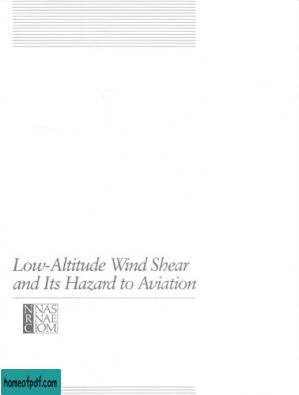Low-altitude wind shear and its hazard to aviation : report of the Committee on Low-Altitude Wind Shear and Its Hazard to Aviation. 电子书下载
书名:Low-altitude wind shear and its hazard to aviation : report of the Committee on Low-Altitude Wind Shear and Its Hazard to Aviation.
Congressional concern over the crash of Pan American World Airways Flight 759, a Boeing 727, minutes after takeoff from the New Orleans International Airport on July 9, 1982, resulted in legislation passed in December 1982 providing that the FAA enter into an agreement with NAS to study and assess the hazards of low-altitude wind shear on takeoff and landing aircraft operations. To accomplish this task the NRC established the Committee on Low-Altitude Wind Shear and Its Hazard to Aviation, consisting of two panels: the Panel on Low-Altitude Wind Variability and the Panel on Aircraft Performance and Operations. The committee`s principal finding confirmed that low-altitude wind variability (or wind shear) presents an infrequent but highly significant hazard to aircraft landing or taking off. Fortunately, most severe types of wind shear are relatively infrequent, generally short lived, and affect only local areas. Some wind shears have been understood by meteorologists for a number of years. These include those found in gust fronts, warm and cold air-mass fronts, mountain waves, low-level jet streams, gravity waves, terrain-induced turbulence, and sea-breeze fronts. Most are predictable, sometimes hours in advance. The more-skilled pilots recognize the potential presence of these shears and the dangers they pose. Scientists have recently begun to recognize the importance of storm downdrafts that are unusually small in horizontal cross sections and that are of short duration. Such downdrafts have been called microbursts. These often severe but localized events present the greatest danger to aircraft operations. Wind shear that resulted from the strongest microbursts actually measured in the summer of 1982 Joint Airport Weather Studies (JAWS) in Denver could not have been penetrated safely if encountered below 300-500 feet of altitude by an aircraft during takeoff or landing.
尊敬的读者:
欢迎您访问我们的网站。本站的初衷是为大家提供一个共享学习资料、交换知识的平台。每位用户都可以将文件上传至网盘并分享。
然而,随着用户上传的资料增多,我们发现部分不宜或版权问题的书籍被分享到了本站。
为此,我们已经关闭了分享入口,并进行了多次书籍审查,但仍有部分内容未能彻底审查到位。
在此,我们恳请广大读者与我们共同监督,如发现任何不宜内容,请 点击此处 进行举报,我们会第一时间处理并下架相关内容。
希望我们能共建一个文明社区!感谢您的理解与支持!
猜你喜欢
- Apache ZooKeeper Essential - Saurav Haloi 电子书下载
- Effective Akka - Jamie Allen 电子书下载
- 《如何把握商机:看准了才能一本万利》葛鹏超文字版 电子书下载
- 《世界不是平的》 Stephen D. King中文版 电子书下载
- 《人生五大抉择:用经济学原理做出改变命运的决定》[美]罗伯特.T.迈克尔中文版 电子书下载
- 《猎魔人系列(套装共7册)》安德烈·斯帕克沃斯基 电子书下载
- The Complete Guide to Blender Graphics - John M. Blain 电子书下载
- 《吝啬鬼》莫里哀文字版 电子书下载
- 《肠外瘘 (第二版)》 电子书下载
- 《姥爷,我们天上见》蒋雯丽文字版 电子书下载
- 《健康米饭:35种好吃的家常米饭》张瑞文扫描版 电子书下载
- 《放空:无聊为什么能解锁创意与效率》曼诺诗·左莫若迪 电子书下载












